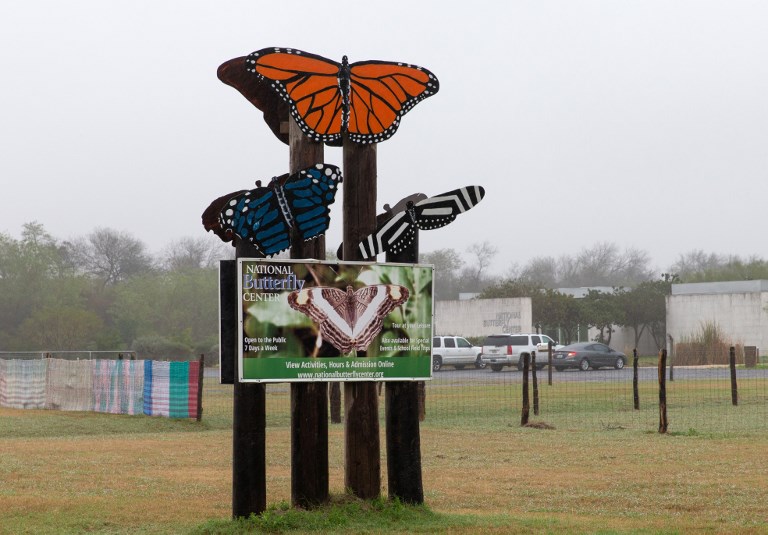Butterflies unlikely victims of Trump’s border wall

Credit to Author: clopez| Date: Sat, 19 Jan 2019 19:33:35 +0000
MISSION, Texas — In Mission, Texas, the construction of part of a long-promised wall on the border with Mexico to stem the tide of undocumented migrants is already in progress.
Among the many who will be affected? Butterflies.
Mission, located in the lower Rio Grande Valley, is home to the National Butterfly Center, a private nonprofit 40-hectare preserve dedicated to conservation of the insects in their natural habitat.
But the wall, a key plank of President Donald Trump’s immigration policy, could end up chopping the area in half, and severely complicate any work being done to save the butterflies that flutter through.
200 species
“This land used to be an onion field,” explains Luciano Guerra, who is responsible for education outreach at the center. “We converted it back to native habitat … And when we created the habitat for the butterflies, we also attracted birds because the birds like to eat the butterflies and the caterpillars. Then we attracted things that eat the birds, and so on.”
In the end, more than 200 species have been counted here. In spring and autumn, “we can have 80 to 100 species of butterflies here in one day,” Guerra says.
Among those are the easily recognizable monarch, with its black and orange wings; the queen butterfly, native to North and South America; and the bright orange passion butterfly.
Along the banks of the Rio Grande, which forms a natural border with Mexico, there are also bobcats, coyotes, javelinas, or skunk pigs, armadillos and Texas turtles.
Building a wall here would be “devastating,” the center says on its website.
Marianna Trevino Wright, the center’s executive director, traveled to Washington to plead her case with lawmakers.
The funding for the part of the wall that would run through the nature preserve unlike the money at the heart of a political showdown in the US capital was approved last year.
Risk of ‘biological desert’
According to the Center, construction of the 50-kilometer stretch of barrier could begin in late February.
Wright impressed upon lawmakers (mainly Democrats) that the wall project is in violation of multiple environmental protection laws.
The wall and the glaring spotlights that would come with it will disrupt the “nocturnal activities of all plants and animals, transforming what is now a vibrant but endangered ecosystem into a biological desert,” she said.
“People say, ‘Well, the butterflies can fly over it or fly through it or around it.’ ‘Not necessarily,’” explains Guerra. “Some butterflies fly lower to the ground they could not go over that 5-meter concrete wall.”
Moreover, “when the bulldozers come in to clear the way for the border wall, they’re going to knock down trees, plants, grasses and so on, which are host plants for the butterfly species we have here,” he added.
Those trees also are the home of several species of birds, especially in the spring, and some mammals risk seeing their natural habitat destroyed or being hit by construction vehicles, Guerra warned.